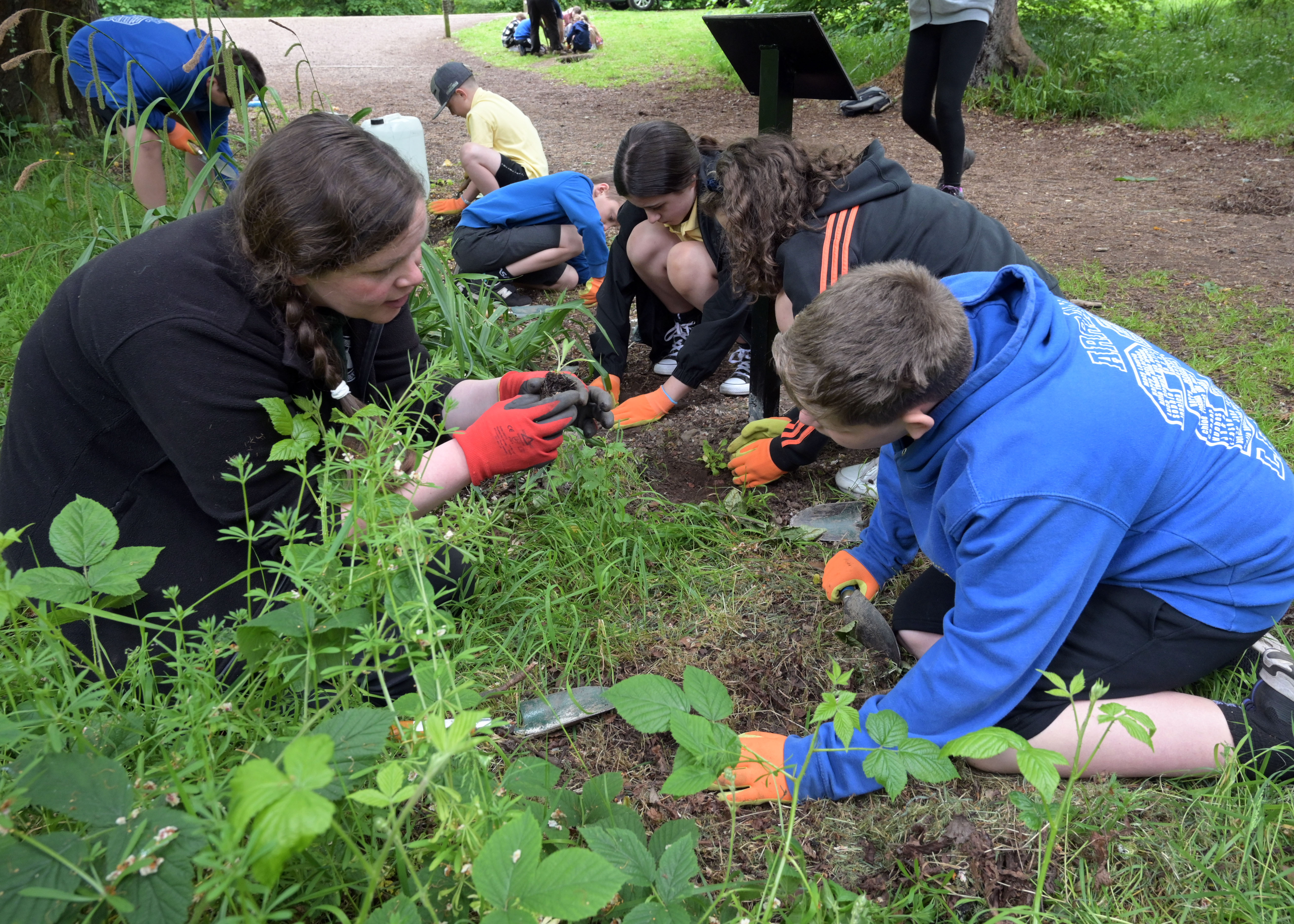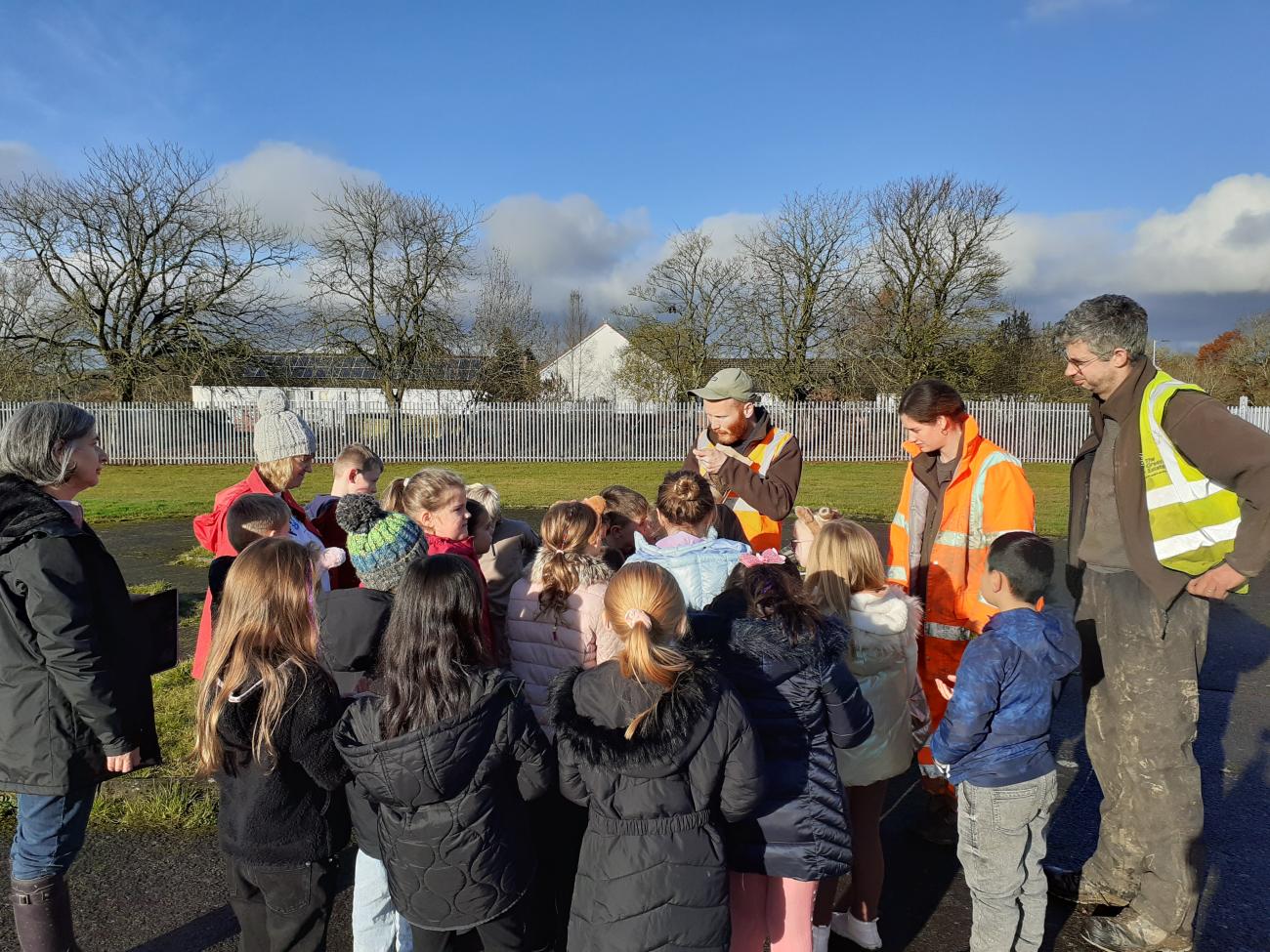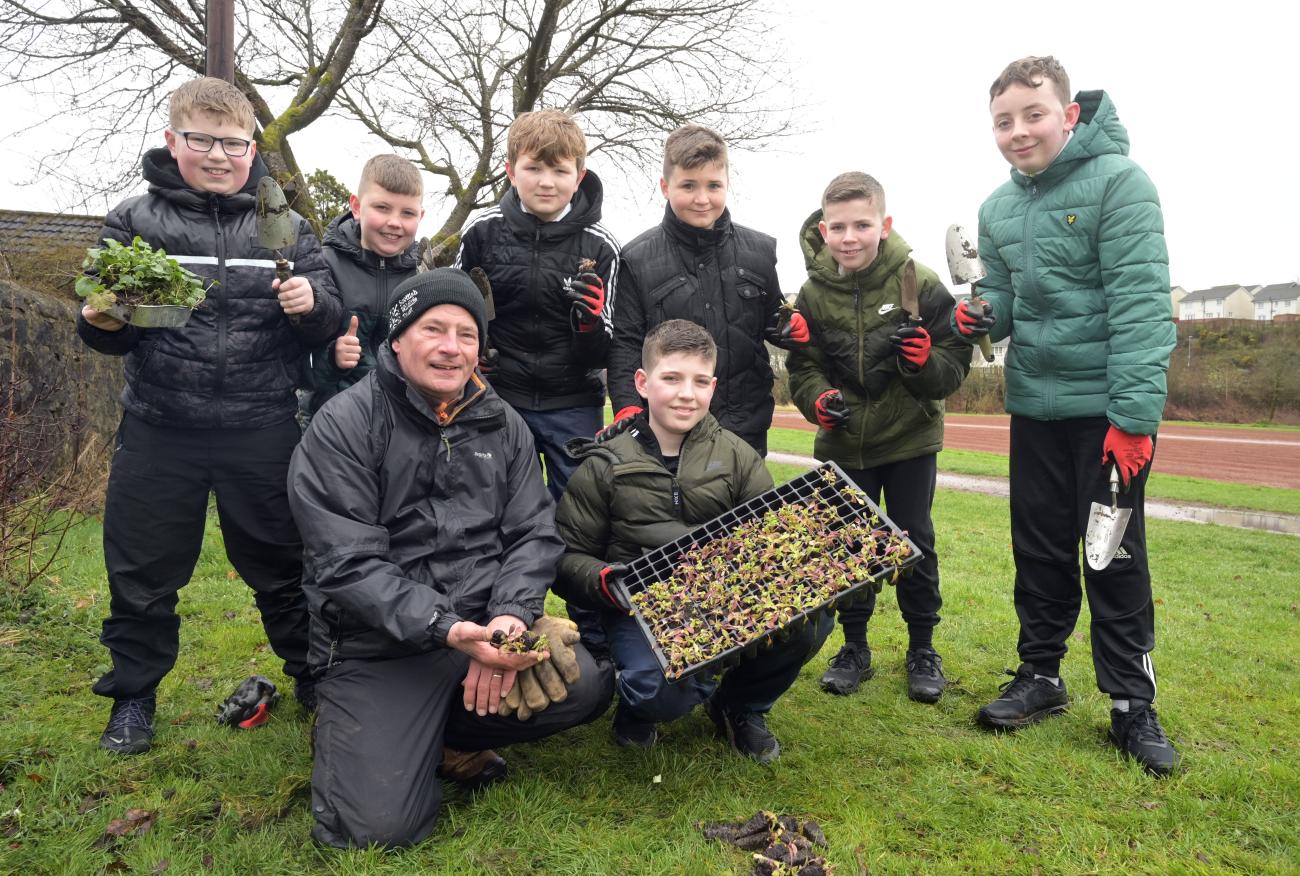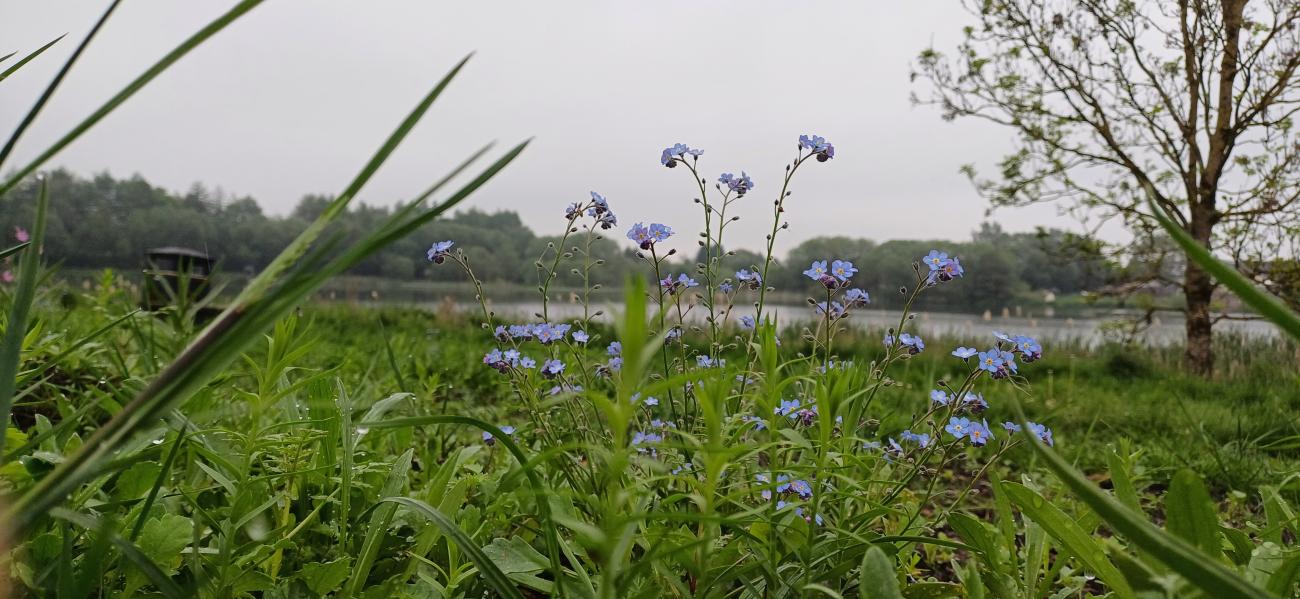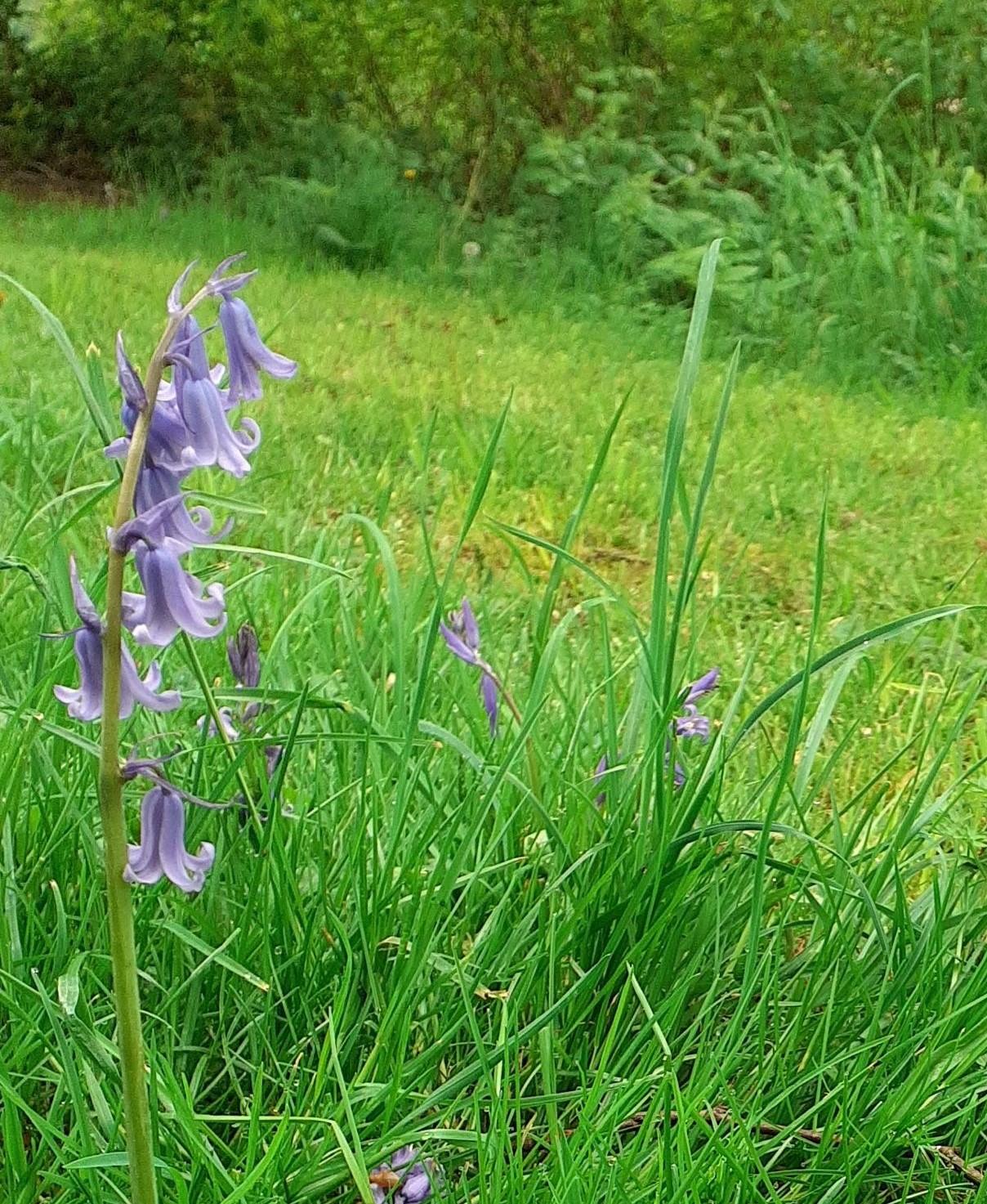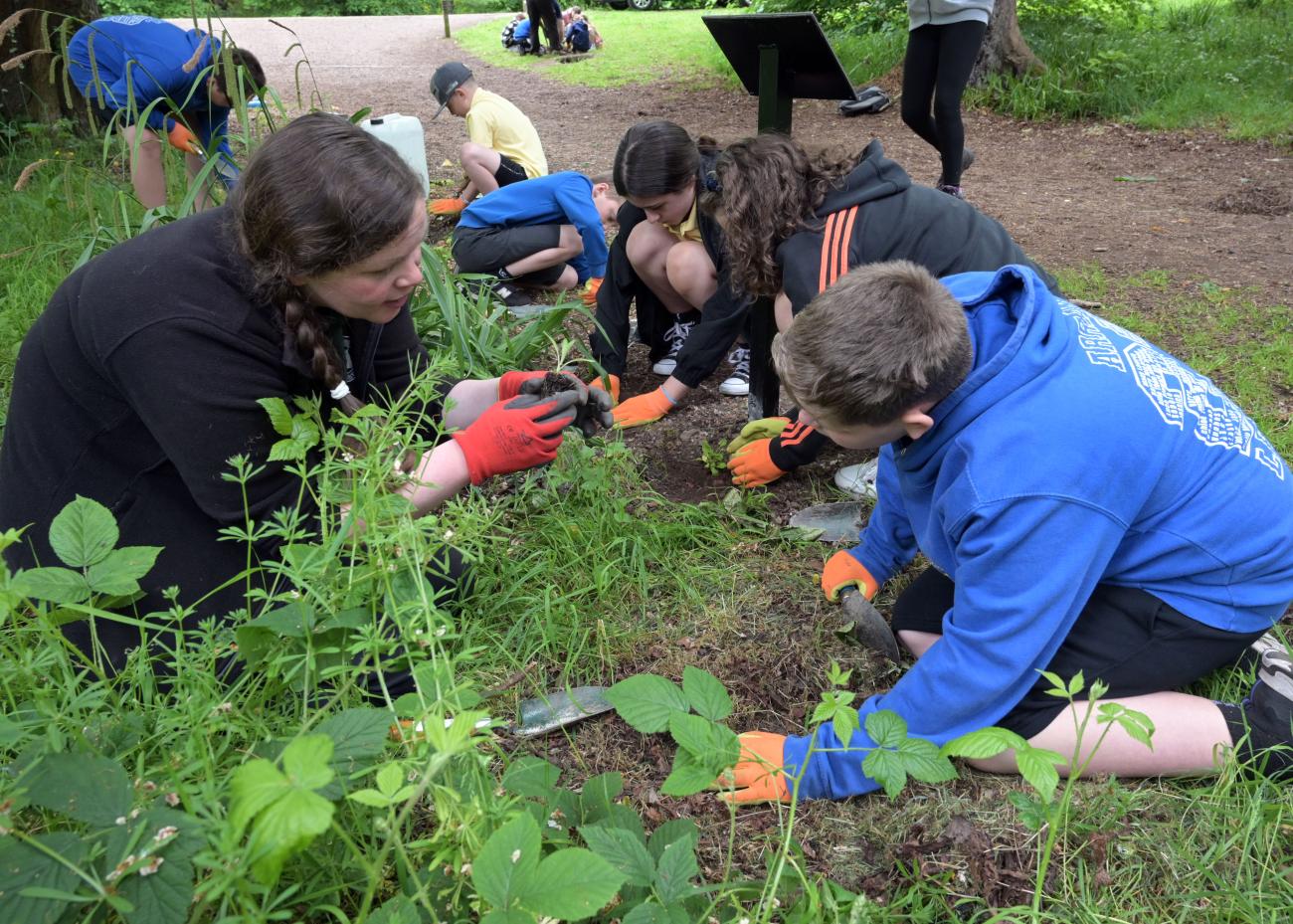Across North Lanarkshire, areas seeded and planted with wildflowers will be blooming this summer thanks to a number of projects designed to improve biodiversity.
In eight town parks, school pupils and members of the community worked with our greenspace team during March to plant native wildflower bulbs. Beautiful bluebells can be seen flowering now and this planting will enhance the extensive wildflower seeding that took place last autumn.
We are also supporting the national No Mow May project to create natural corridors of longer grass, providing shelter, food and support for local wildlife, including insects and birds, and giving opportunities for nesting sites for species such as hedgehogs and toads.
The Mega Flora project is running at Strathclyde and Palacerigg Country Parks and four other locations where a mix of wildflower seeding, bulb and plug planting, and no mow areas of grassland will create diverse and healthy greenspaces for local people to enjoy, as well as help reduce biodiversity loss and combat climate change.
Local groups enjoyed taking part in plug planting last year. The first annual species of flowers will start to show soon, with these and other perennial plants flourishing next summer. As part of the Mega Flora project, signs have been installed giving details of the planting, and wooden and metal artwork themed around wildflowers will be on display.
Five community sites at Chryston, Caldercruix, Dykehead, Allanton and Torbothie, chosen and planted by local residents through a Participatory Budgeting initiative, will also see their first summer of flowers this year.
These projects all contribute to the council’s Biodiversity Action Plan, and funding has been received from the Scottish Government’s Nature Restoration Fund and the 2023 Levelling Up Parks Grant from Greenspace Scotland, on behalf of the Scottish Government.
By enhancing the natural ecosystems, they also contribute to pollution control and flood reduction.
“Areas of grass and wildflowers have benefits for our biodiversity, allowing insects, birds and small animals to find shelter, food and nesting sites,” said Councillor Helen Loughran, Convener of the Environment and Climate Change Committee.
“These species then help to pollinate crops and other plants, as part of the food chain. Enjoying wildlife and greenspaces contributes to our physical and mental well-being, and they’re helping reduce our carbon footprint.
“Our new areas of wildflower planting will take time to develop but they will provide interest throughout the year as they green up, flower and then produce seed heads at the end of the season which provide food for wildlife and will regrow for next year.”
The town parks where planting has been carried out are: Central and Centenary Parks, Airdrie; Glenboig Village Park; Burngreen in Kilsyth; Westend Park, Coatbridge; Belhaven, Wishaw; and Duchess Park and the Dalzell Estate, Motherwell.
The Mega Flora project sites are: Strathclyde Country Parks, Palacerigg Country Park and locations in Motherwell and Shotts.
